Spin Testing for Manufacturing 101
Leave a CommentIn the quest to produce stronger, more durable, and cost effective rotating parts, manufacturers are turning to spin tests to help achieve these goals. Spin tests for manufacturers can be used to validate the stability and integrity of a part, or to enhance the desirable properties of the material. We will explore the differences between traditional spin testing and spin testing for manufacturing purposes. We will also discuss the benefits of spin-testing your rotating parts, the subtle but important factors necessary to run successful manufacturing spin operations, and the importance of finding the correct spin testing service provider for your specific needs.
Jet engines, power turbines, turbochargers, electric motors — all of these high-speed rotating parts are critical for a wide range of modern high-performance machines and key infrastructures. In order to ensure optimal reliability, durability, and quality, these components must undergo rigorous engineering and testing processes.
Spinning at high speed, a machine part, such as a jet engine disk, stores a significant amount of rotational kinetic energy. In the event of a part failure, this stored kinetic energy is released, and the end result can be catastrophic. To prevent this, a spin test is conducted to evaluate the structural integrity and robustness of high-speed rotating parts. The data collected from this test allows engineers to better understand rotors’ failure behavior and improve the design as needed. Introduced more than half a century ago, spin testing techniques have been integral to the evolution of high-speed rotating machines.
While there are a variety of spin tests available, most of them can be grouped into one of two major categories: Spin Testing for Research and Development and Design Validation, or Spin Testing for Manufacturing.
Spin Testing for R&D and Design Validation
- Custom-designed engineering tests used to validate the rotor design and/or certify the part
- Typically involve a prototype, first article, or purpose-designed test rotor assembly
- Design, build, and execution of the test should be carried out as a carefully managed engineering project
- Test rig designs aim to maximize measurability of engineering data, and create realistic conditions during the test to simulate the relevant operating environment of the machine
- Some examples of R&D and Design Validation spin testing include: Overspeed Certification Tests, Low Cycle Fatigue (LCF) Tests, High Temperature and Thermal Gradient Spin Tests, and Dynamic Spin/High Cycle Fatigue (HCF) Tests
Spin Testing for Manufacturing
- Involve processing batches or a large volume of parts to specified operation and inspection steps
- A quality-controlled manufacturing operation is streamlined to produce consistent, quality products
- Timeliness, quality, and efficiency are the key drivers of a successful manufacturing spin operation

Achieving Repeatable Success in Manufacturing Spin Tests
While manufacturing spin tests may appear simple and uninvolved in comparison to the more complex and sophisticated R&D spin tests, the success and usefulness of all tests depends on the expertise of the team you choose to partner with. Experienced technicians and engineers will have carefully planned quality processes in place to ensure smooth testing and reliable results.
In order to deliver products to customers’ specifications both cost-effectively and on time, manufacturing spin tests must make use of robust, high-quality manufacturing systems capable of achieving success over thousands (and sometimes millions) of iterations. In order to achieve this repeatability, a holistic approach that considers the details of each step in the operational workflow must be employed.
Manufacturing spin tests can be further broken down into two categories:
- Overspeed Test
Overspeed tests are conducted to validate the stability of rotor balance and part integrity in a high-speed environment. Final machined parts, such as turbocharger impellers and turbines, are spun to a customer specified rotational speed to validate the parts’ integrity.
- Forging Pre-Spin
The forging pre-spin method involves a material conditioning process for aero-engine and power turbine disks. Semi-finished or un-machined forgings are spun to a specified speed to yield the material. There are several benefits of pre-spinning forgings and disks, but typically this work is done to enhance the stability and durability of the material and final products. Forgings are carefully inspected and monitored at each step of the pre-spin process to ensure proper material conditioning.
Manufacturing Spin Operation at a Glance
- Inspection: Examine the parts for any damage or anomalies; some customers also require part inspections for dimensional conformance
- Assemble the part with spin tooling
- Check rotor balancing, and perform corrections if necessary
- Perform a spin test; monitor rotor balance and rotor dynamic stability over the test speed
- Record and report the result
- Disassemble the part from the spin tooling
- Perform post-test inspections, and ship the part to the customer
Specific to forging pre-spin operations, customers also often require a “pilot run” during the earlier phase of process implementation; the pilot run is typically performed prior to launching a full-scale manufacturing spin operation. A series of pre-spin tests is performed to validate the tooling design performance and try out the handling equipment, operational processes, and documentation flow. These pre-spin tests also allow clients to confirm the material behavior (forging growth to a speed).
Several factors can disrupt successful pre-spin operations, however, including:

Poorly Designed Spin Tooling — Performing an efficient, repeatable operation requires well-designed tooling and handling equipment. Poorly engineered spin tooling can lead to unstable rotor behavior, rotor dynamics issues, and limited reusability in the tooling — ultimately resulting in incipient, recurring issues in pre-spin operation. Successful spin tooling design depends on:
- Tooling and handling equipment design performed by an experienced engineering team that understands the ins and outs of spin operation.
- Years of experience designing and routinely testing different types of spin tooling for different test disks.
- Comprehensive engineering work, from the selection of suitable materials to detailed stress and dynamics analyses of the rotor assembly. Careful engineering ensures reusability and high performance of the tooling in the manufacturing environment.
Balancing and Severe Vibration Issues — A critical step in rotating machine construction, proper rotor balancing helps ensure no time is wasted troubleshooting rotor dynamics and vibration issues. –
- Balancing is often overlooked and performed without a real understanding of its importance. Specific to pre-spin operations, the forgings coming off the production line typically have unfinished contours and are often severely unbalanced. Adding extra steps for machining and balancing forgings, however, results in added costs and downtime. In some cases, forgings may not be able to be easily balanced. (TDI’s high-performance damper system is specifically designed to manage vibration and rotor instability problems.)
Bad Quality Processes and Material Handling — For professionals working within the strict requirements of the aerospace standard, quality processes must be kept in mind throughout the entire operation. Here’s what to look for when sourcing for aerospace standard processes:
- Services based on the AS9100/ISO9001 quality standard, backed by experience with leading aeroengine OEMs.
- A culture of quality that ensures every step of the spin tooling process is performed to stringent standards. Through closely monitored parts tracking and receiving to meticulous inspection and pre-spin work, there should be a guarantee that all processed parts are of the highest possible quality and reliability.
- Highly trained staff, state-of-the-art spin rigs, CMM machines, and climate-controlled inspection rooms.

Inaccurate Speed Measurement and Control — Measuring and controlling rotational speed is critical for successful spin test operations, but this step is also often overlooked.
- Inaccurate speed data and spin test operational records can lead to catastrophic field accidents. Whether done intentionally or unintentionally, rotors spun to an incorrect speed severely compromise the integrity of the parts and the machines.
- In a nonconformance case with an exceeded speed target, the rotor may have sustained damage that is undetectable to inspectors.
- In a nonconformance case with an undershot speed target, there are two likely causes: 1) The rotor was not tested properly to the requirement, or 2) The rotor may not have achieved the required material conditioning at the specified target speed.
- Measuring, recording, and ensuring the accuracy of spin test speed is one of the most important steps in spin test operations, directly affecting the quality of the part. Plus, it’s very difficult and time consuming to examine the aftermath of an incorrectly executed spin test.

Rotor Bursts — Accidents can happen even in the most diligently planned and managed manufacturing environments. During spin testing, it’s important to take preventative measures to manage the risk of disk bursts, since rotors spinning at high speeds store a large amount of rotational kinetic energy that can be released in the event of a part failure, leading to catastrophic damage.
- The first priority in managing the risk of a disk burst is ensuring optimal safety. Spin pit containment alone is not enough; facilities must take necessary measures to protect spin pit operators and surrounding equipment from unexpected containment failures. Ideally, spin pits should be placed in a purpose designed test cell with a separate operator room so that workers are not at risk.
- Downtime in any manufacturing process can cause client dissatisfaction and added expenditures, so it’s critical to establish a practical contingency plan that will allow you to quickly respond to and recover from accidents, should they occur.
- Specific to forging pre-spin work, operators should carefully manage the risk of disk bursts. Forgings are heavy and typically spun to a relatively high speed, which means they can cause great destruction in the event of a burst.
Learn More
For over 40 years, Test Devices Inc. (TDI) has been a leading provider of spin testing services and equipment, developing and advancing the science of centrifugal, vibratory, and thermal stress testing. Whether you’re interested in setting up your own manufacturing spin operation or looking to outsource the work, you’ll need a dependable partner to ensure optimal performance, quality, and reliability.
Since first introducing pre-spin testing services to our range of capabilities ten years ago, TDI has become a trusted partner for various leading OEMs in the development, innovation, and implementation of their pre-spin operations. As a leading expert in spin testing and related applications, our team has a deep understanding of the many small details that can affect successful pre-spin operation design and implementation. Our equipment designs and engineering solutions embody 40 years of pragmatic innovation gained from hands-on experience performing spin tests and industrial spin operations in forging pre-spin work:
- TDI offers a high-performance drive control system built based on the latest PLC technology and TDI’s 1160 Precision Digital High-Speed Tachometer. The 1160 tachometer, built on a 16-bit digital technology platform, allows for fast and reliable speed measurement — thereby ensuring accurate control of rotors in high-rpm spin operations.
- TDI has performed numerous burst tests for different types and sizes of rotors. With years of experience and an accident-free record for many decades, we’re proud to offer the industry’s most robust risk mitigation services against high-energy disk bursts.
For help designing a facility, production processes, and spin tooling, contact us today. Our team can provide the necessary training and expert assistance needed to implement a highly successful operation.
Expanding Capacity – Balancing Services
Leave a CommentRotating components such as jet engine disks and high-speed motor armatures must be balanced well to warrant a good performance and overall longevity of machines. Balancing machines pinpoint the exact amount and the location of unbalance in rotating components. Once these areas are identified, skilled technicians correct the unbalance level by either removing material in heavy areas through drilling, milling, or other processes or by adding mass (weld or bolt additional material onto areas that are too light).
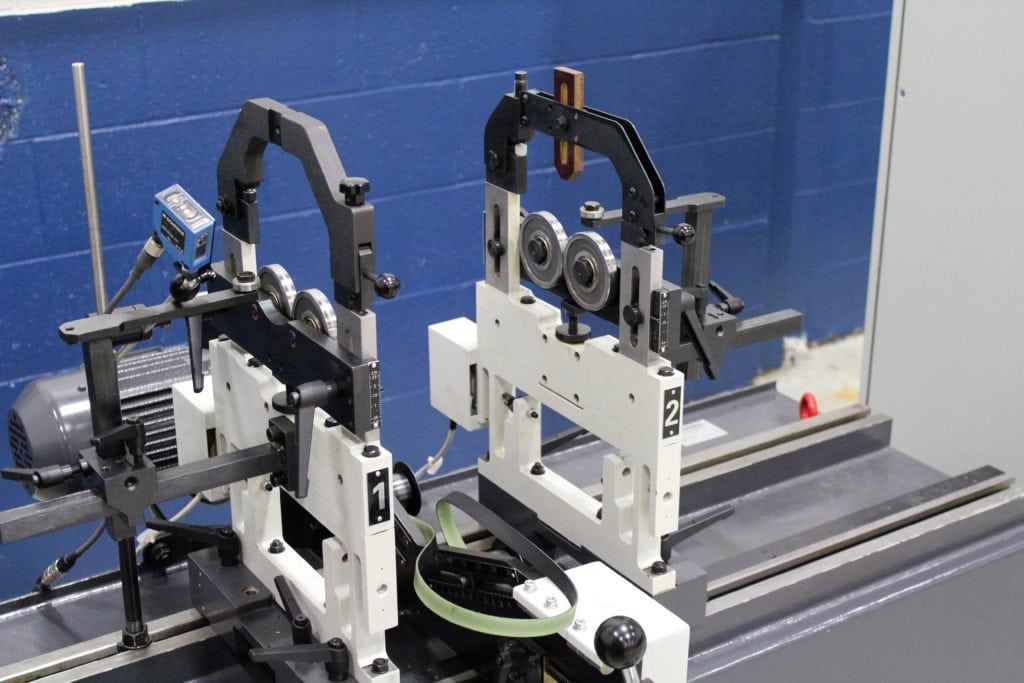
Unbalance resulting from eccentricities between the center of the rotor’s gravity and the axis of rotation causes the heavier side of the rotor to exert more centrifugal load. The unbalance in the rotor often directly impact the levels of noise, vibration, wear, and leads to significant reduction in service life of the equipment. In some applications, unbalanced rotors are even considered to be a safety hazard if machine failure can result in personal injury or property damage.
New Updates for TDI’s Balancing Machines
For the past four decades, Test Devices Inc. (TDI) has provided customers with an extensive range of rotor engineering services, including diagnosing and resolving various balancing issues. In an effort to meet growing consumer demand and reinforce our commitment to providing the most accurate rotor balancing services, we’ve expanded our balancing capabilities by acquiring a new HM 20 Schenck Horizontal Balancing Machine.

This state-of-the-art machine represents the latest in rotor balancing technology. One of the main benefits of the HM 20 is its hard-mounted bearing design, which ensures rapid changeovers between rotors. This feature allows us to handle significantly higher volumes of balancing jobs without compromising the quality and repeatability of the work, and increasing the efficiency of our operational capabilities.
Additionally, the HM 20’s modular design makes it easy to modify the setup for a wide range of components by using various purpose made attachments. These features increase the versatility of the balancing machine and allow us to meet the unique demands of customers regardless of industry or application.
Differentiating our services, our balancing operation offers:
- Accuracy & Precision: We address a wide selection of balance testing needs, including unbalance tolerances below ISO G2.5 specifications. We’ve developed distinct processes to ensure accuracy and repeatability of our balancing work, including studies and analytical method for asymmetric rotors.
- The Facility: Our balancing machines are carefully set up, calibrated and maintained by experts so that they are properly calibrated and dynamically isolated. We have also set up a dedicated area to efficiently perform the various tasks involved in balancing work. We offer comprehensive options for balance correction methods ranging from simple dremel to precision CNC machining.
- Quality: We offer full inspection services ranging from CMM dimensional checks, visual checks and manual measurement by experts. We follow AS9100 Aerospace Standards. All of our work is recorded and fully traceable. We also comply to various requirements to serve ITAR works.
- Handling: We understand the importance of proper handling and protection of the critical features of customers’ parts. Our engineers will work with you to fully capture your handling requirements in the balancing operation. Our team can support your needs in design and provision of protective gears.
- Engineering Support: In addition to balance correction services, Test Devices (and our parent company, Schenck) offers advanced technical support in designing customized balance toolings, fixtures, as well as offering engineering consultation on planning balancing processes and designing balancing features for your rotors. Dealing with balancing as an “afterthought” often results in an expensive problem.
Balancing Services at TDI
At Test Devices Inc., we offer a broad range of timely and cost-effective balancing services for virtually any size of rotor. Our advanced equipment (including the newly acquired HM 20 Schenck Horizontal Balancing Machine) will balance the most intricate and complex parts in the aerospace industry.
Our services also include the design and manufacture of customized balance tooling to help produce unique and precisely balanced components.
Our staff consists of highly qualified and experienced industry experts, engineers, technicians, and consultants who provide rotor balancing solutions in hundreds of challenging applications for world-renowned clients. We partner with Schenck, the experts in balancing, to combine their advanced technology and knowledge base with in-depth expertise and software support. We also work closely with our customers, analyzing each specific case to determine the best balancing methods and strategies.
- Selection of a machine with the proper sensitivity for the component and balance requirement
- Creation of robust controlled processes for production work to ensure repeatability from lot to lot
- Accuracy improved by ensuring consistency of the setup (ie. Little details) and rotor specific calibration
- Repeatability by using “master” rotors to ensure part specific configuration/calibration is correct and consistent
- In-house true engineering capability to design of component-specific balance tooling that considers dimensions, tolerances and centerline error
- Drawing upon our Schenck expert balancing colleagues to address unusually complex balancing requirements
- Selection of appropriate material removal methods (milling/grinding) to address customer requirements
- Utilizing trained balance personnel
The Balancing Experts
Proper balancing of rotors and other rotating components is essential to ensuring the efficiency, longevity, and safety of your machinery and equipment. Furthermore, a good balancing reduces your equipment’s maintenance requirements, eliminating the down time and costs associated with frequent repairs and part replacement.
Although it’s relatively simple to diagnose an unbalanced part, careful selection of a balancing service provider is crucial to guarantee optimal results. At Test Devices Inc., our technical staff have seen it all and are willing to assist you with your balancing needs.
If you would like to learn more about the risks of improper balancing and how you can avoid them, download our comprehensive eBook, Balancing 101, or contact our team today.
The Competitive Advantages of Working with Test Devices
Leave a CommentTest Devices provides our clients with leading spin and subscale jet engine testing, balancing services, and test equipment. If your application involves high-speed, rotating components, Test Devices is your one-stop shop for testing and servicing needs.
We provide spin tests for manufactured parts and design validation and offer a variety of add-on services such as optical strain surveys and high-speed video imaging. We also offer subscale jet engine testing services with unparalleled capabilities—we test for key engineering concerns such as creep and fatigue, volcanic ash, coating durability, and more.
Our balancing services utilize precision machining to ensure that we provide exceptional quality assurance. All our test equipment – from dynamic and fatigue rigs to drive systems and beyond – is the product of nearly 40 years of experience.
Test Devices Services and Capabilities
At Test Devices , we’ve designed our service portfolio with our clients in mind. We provide a full range of services to help our clients mitigate the costs and hassles associated with complex testing.
Spin Testing
Test Devices performs a variety of spin testing and rotor balancing services. We’re fully committed to supporting your critical engine part certifications, validating your designs, and improving your manufacturing processes. Our spin testing services include:
- Overspeed testing
- Pre-spin testing
- Burst testing
- Low-cycle fatigue testing
- Dynamic spin testing
- Thermal gradient testing
- Overspeed certification testing (also known as proof testing)
Subscale Jet Engine Testing
We offer subscale jet engine testing for clients in the aerospace industry. Our proven methods offer an affordable, practical way to gather crucial test data on materials, coatings, or sensors for new engines in development.
Balancing Services
Precision rotor balancing requires very specific skills and expertise. The process may seem simple, but is far from it. Many other providers will lack the capabilities necessary to meet the strict and complex standards required by demanding aerospace applications. Our highly trained engineers possess the education and experience necessary to achieve complex balances within the strictest tolerances.
Test Equipment
Our team at Test Devices has developed the most precise, accurate, and efficient test solutions in the world. We only employ experienced and accomplished scientists and engineers, so our team is well-equipped to handle nearly any testing need.
Test Devices : Your One-Stop Shop
Our full range of solutions ensures that we will be a single-source provider for client projects. Our facility possesses the following:
- Balancing
Our state-of-the-art precision balancing machines offer capabilities of up to 450 lbs., ensuring that we can balance rotors of nearly any size.
- Specialty Machining
Our fully equipped, compact machine shop homes myriad machining and tooling options. We specialize in developing products to tight tolerances of ±0.0001″ for balancing and spin tooling.
- Batch Production Machining
We’ve installed two Okuma LB45 horizontal lathes capable of 25″ turning. We also possess a Toshiba TUE-15 vertical turning lathe capable of 70″ turning.
- Advanced Dimensions Inspection
Our expert inspectors use the most advanced equipment available to ensure that machinery meets the most demanding specifications. We have a climate controlled inspection room with two Ziess Contura scanning coordinate measuring machines capable of achieving accuracies of 0.18 microns.
- Expert Testing and Production Teams
Our seasoned team of engineers and expert technicians possess the capability to project manage and support your needs regardless of industry. Our combined expertise in engineering and building spin equipment, tooling, instrumentations, and quality production gives us a unique ability to expeditiously troubleshoot and debug problems. Our solutions will also be provided in the most affordable and timely manner possible.
For more information on the team at Test Devices and how we can improve your bottom line, please download our eBook, “Unparalleled Innovation: Competitive Advantages of Working With Test Devices ”
For more information on Test Devices or our available services, please request a quote.
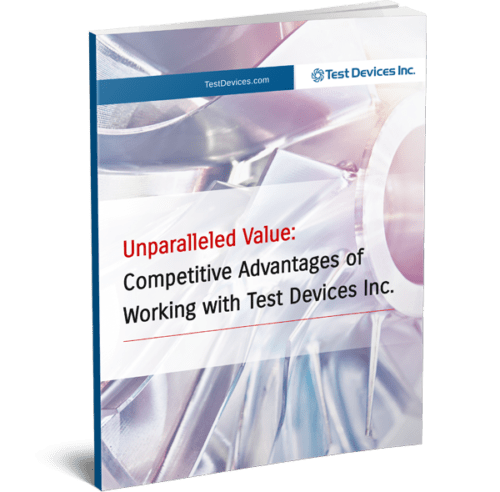
Unparalleled Value: Competitive Advantages of Worthing with Test Devices today.
eDrive Trends and Growth Potential for 2019
Leave a CommentIn recent years, electric vehicles have made a big impact on the mainstream automotive market. Consumers in more and more parts of the country are switching to zero-emissions vehicles as the risks and results of unmitigated climate change become more pronounced. Therefore, many automotive manufacturers are beginning to design, build, and sell electric vehicles, contributing to rapid growth in the EV market.
Electric vehicles play a key role in shaping the economy of the transportation sector. As the demand for hybrid and electric vehicles continues to rise, consumers will eagerly fund through their purchases innovative new technologies that make these vehicles even cleaner and more cost effective to produce.
The future scenario becomes even more persuasive when one considers the international community’s role in supporting these efforts. Leaders in the EU, China, and Japan are taking steps to incentivize the production and sale of electric vehicles, and they’re also introducing increasingly stringent regulations against gasoline engines. All these trends stem from the rising anxiety in response to climate change, of which fossil fuel–burning vehicles are a major contributing factor.
Electric Vehicle Trends in 2019
Electric vehicle technology has improved by leaps and bounds in recent years. Advances in this field have allowed these vehicles to match or even exceed the strength and versatility of traditional gasoline-burning vehicles. Electric motors can now support medium- and heavy-duty vehicles like trucks and buses, and they offer a host of other benefits previously reserved to gasoline-burning vehicles.
With year-to-year production increasing rapidly, manufacturers and consumers are starting to see the improvement in affordability of EV components and finished products. In fact, producing electric vehicles has become so affordable that many transit agencies are working toward a full conversion of their bus fleets to electric buses.
Public perception surrounding electric vehicles has shifted, too. Companies like Tesla have turned this once-niche market into a luxury power brand, and other automakers are starting to catch up. Additionally, many states and municipalities are incentivizing businesses to install car charging stations (or installing these stations themselves), increasing electric vehicles’ range and improving their utility as a tool for commuting.
Future Forecasts by Industry Analysts
Because they rely on the growing ubiquity of recharge stations, electric vehicles would be nowhere without the utilities that provide them with electricity. Energy Innovation modeling predicts that electric vehicles will account for 60–75% of new light-duty vehicle sales by 2050, and this will represent 13–15% of national electricity demand at that time.
A recent study by BCG details four factors that are expected to shape the transition to electric vehicles in the next decade:
- Technology
- Regulatory mandates
- Consumer adaptation
- Autonomous vehicles/ridesharing
The study’s authors predict that internal combustion engines will continue to dominate for the next few years, but the years between 2020 and 2025 will see an exponential increase in the market share of electric vehicles as OEMs adapt to increasingly stringent efficiency and emissions standards. While BCG predicts the majority of consumers to switch to hybrid vehicles, they also expect battery electric vehicles (BEVs) to gain market share over 2025–2030 as the total cost of ownership of these vehicles continues to fall.
Accenture has highlighted Europe, China, and the US as focal points for the coming mass-market adaptation of electric vehicles. Their electric vehicle market attractiveness index factors in political, economic, and technological information and advancements, highlighting these regions as having the strongest overlap between wealth, innovative potential, and regulations pushing consumers to adopt electric vehicles.
Test Devices’ eDrive Capabilities
Test Devices is proud to contribute to the growth of electric vehicle manufacturing by offering a host of consulting, measurement, and equipment-based testing services to automotive manufacturers. We’ve led the field in providing realistic rotational testing systems and services for over four decades
Some of our offerings include:
- Test equipment
- Rotor speed balancing
- Vertical spin test machines (to 160,000 RPM)
- Coordinate measurement machine and dimensional inspection
- Technical consulting
- Test design consulting
- Rotor dynamics analysis
- Design for balancing and balance budgeting
- Workshops and training
- Design and manufacturing or custom interface tooling for spin testing and balancing
- Spin test services
- Overspeed testing
- Burst testing
- Heated testing
- Cyclic testing
- Measurement systems
- Rotor speed, vibration, and temperature
- Rotor growth measurement
- High-speed video
- Crack detection
With an unparalleled reputation for safety and innovation, Test Devices is the ideal choice for any individual or business looking to evaluate the reliability of their equipment and vehicles. If you would like to learn more about Test Devices’ eDrive capabilities, contact us for further information today.
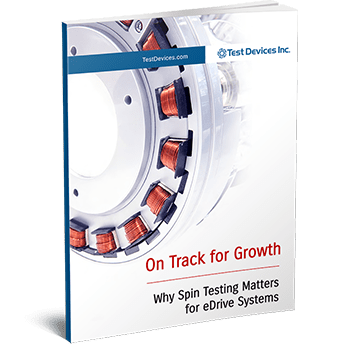


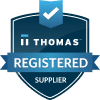



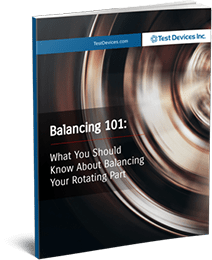

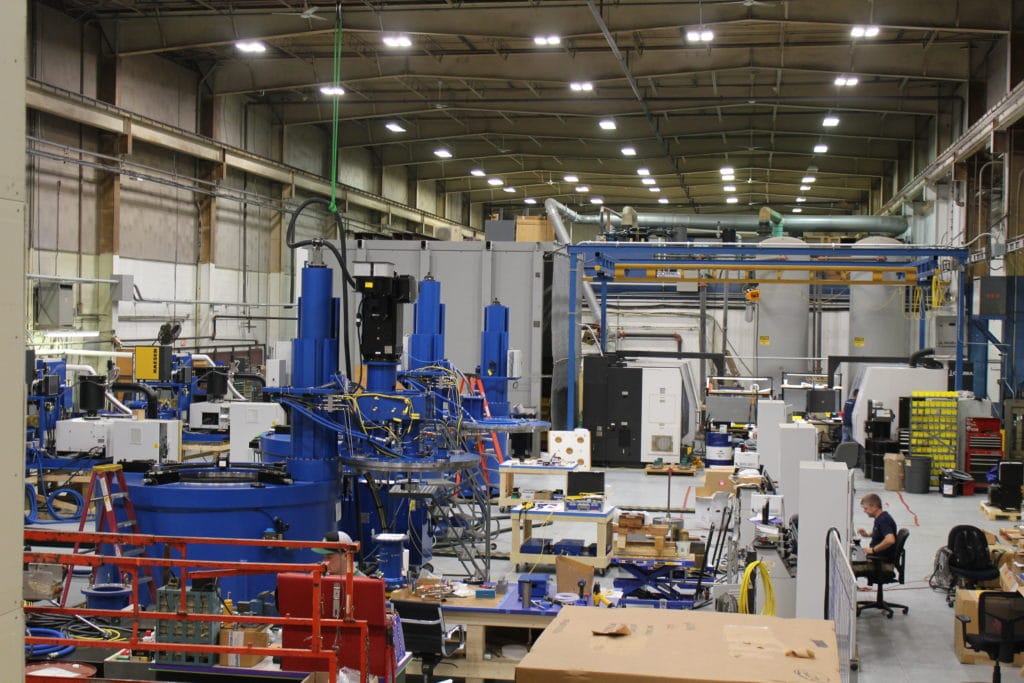
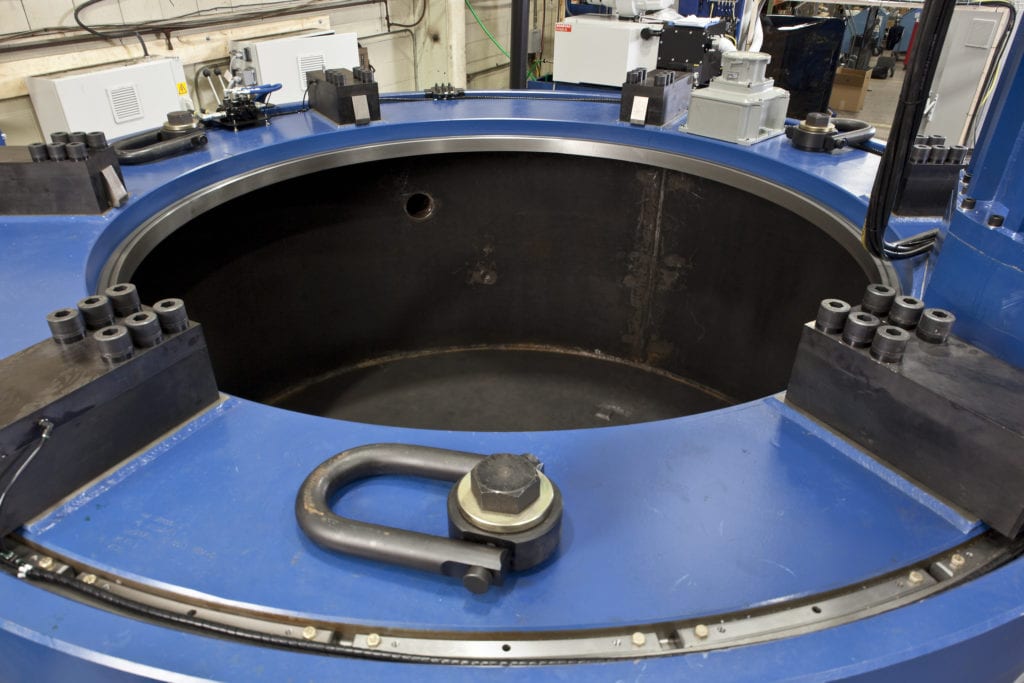

 >”/>
>”/>